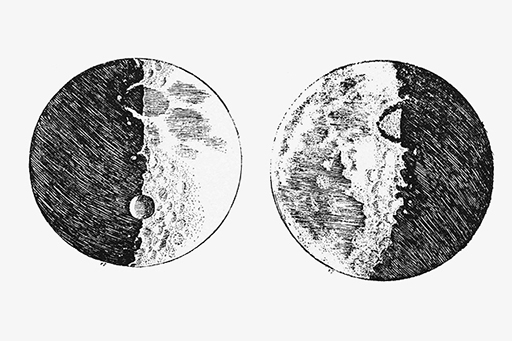2.1 Craters on the Moon’s surface
For thousands of years, humans have been relying on nothing more powerful than the naked eye to observe features on the Moon’s surface. What they have observed are large dark patches on an otherwise bright surface.
With the advent of the telescope, the nature of these dark patches began to be better understood. Using a simple telescope (up to 30× magnification), the Italian astronomer, physicist and mathematician Galileo Galilei (1564–1642) was able to observe that the patterns of dark shadows on the Moon’s surface changed with the Moon’s phases (Figure 21). He became the first person to realise that this is due to variations in topography. The prevailing view of the time was that the Moon’s surface was perfectly flat, when in fact it is covered in mountains and craters.

